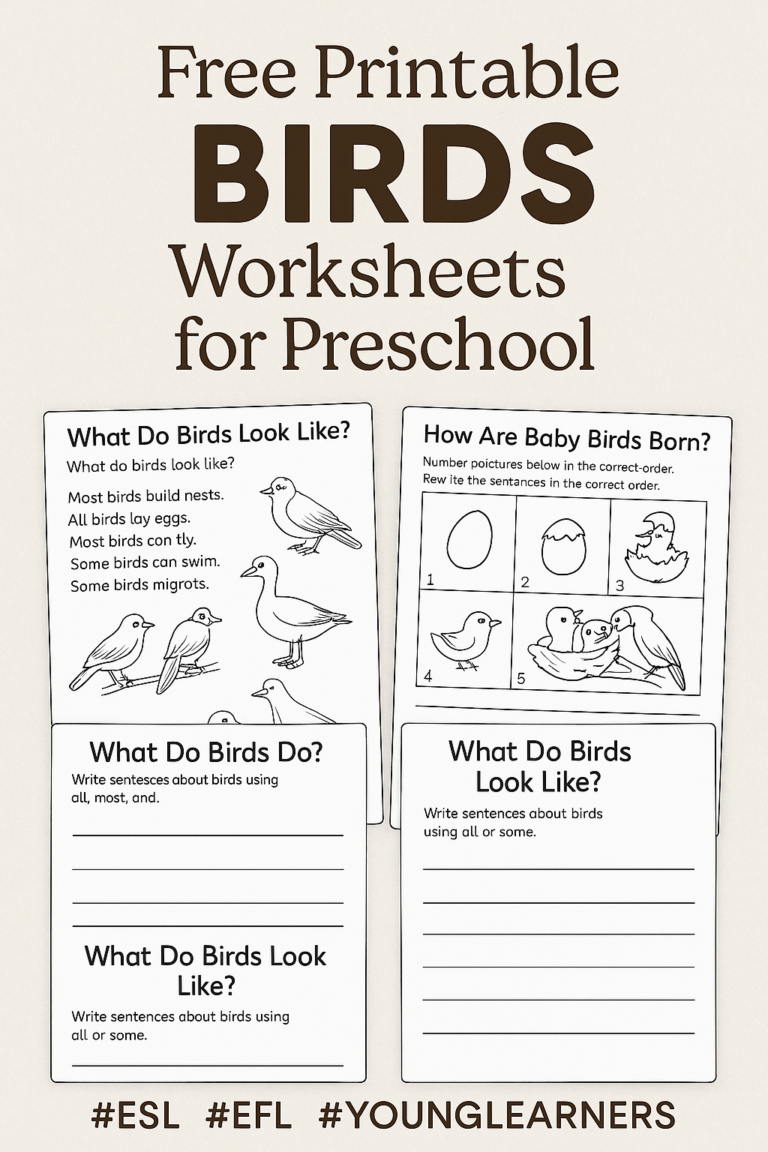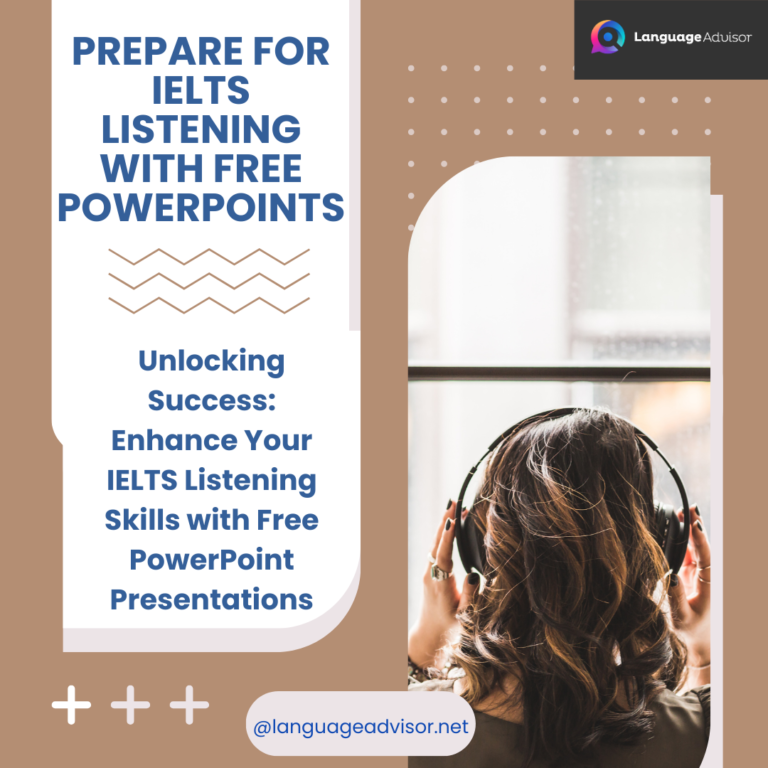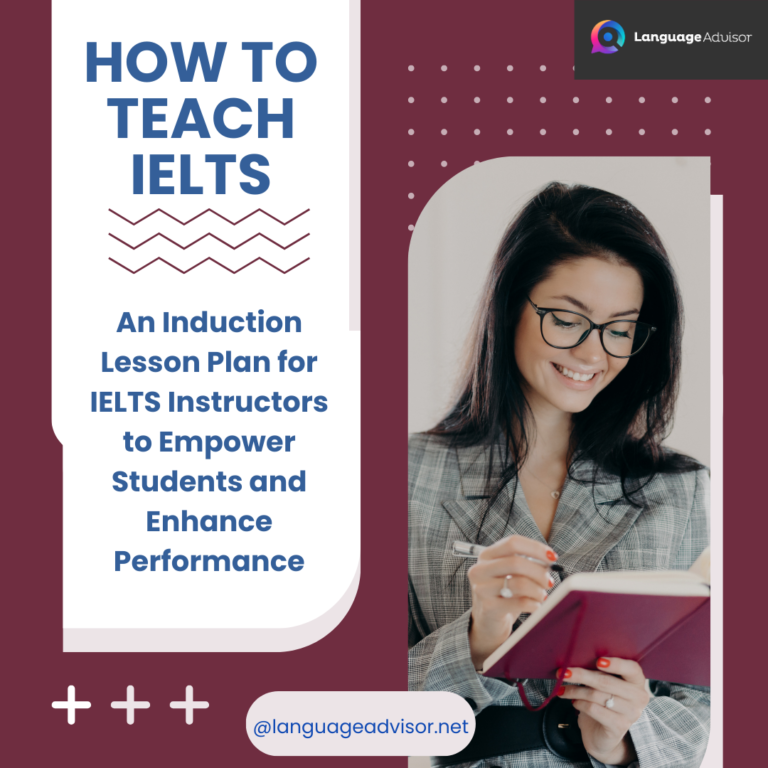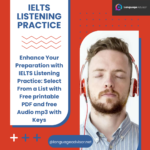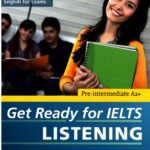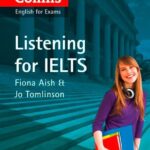IELTS Listening Practice. Mastering IELTS Listening with Map Vocabulary, Map plan and practice, Mpr Audios and keys with free Printable PDF
IELTS Listening Practice

IELTS Listening Practice
The IELTS Listening sample test in this lesson will teach you how to answer map and plan labelling questions. These come up regularly in the exam and are particularly common in Section 2.
The subject for plan questions will typically be a tour of a specific building such as a hotel or museum, or the description of a place. In map questions, the speaker will often talk about proposed changes to a location.
Your task is to listen to the recording and identify different areas, features or rooms. You will often be given a list of words from which to choose the correct answers. If no list is given, you will have to identify the answers from the recording.
Many students find these one of the easiest question types to answer because the graphic will contain lots of clues as to the missing words, especially in the labels already present.
So, let’s get started. The lesson includes:
- Sample questions
- Strategy & tips
- Vocabulary
- Practice question
- Answers
Here are two questions to give you an idea of what to expect. The first IELTS Listening test sample is a map question, whilst the second is a plan question.
IELTS Listening Sample Test 1
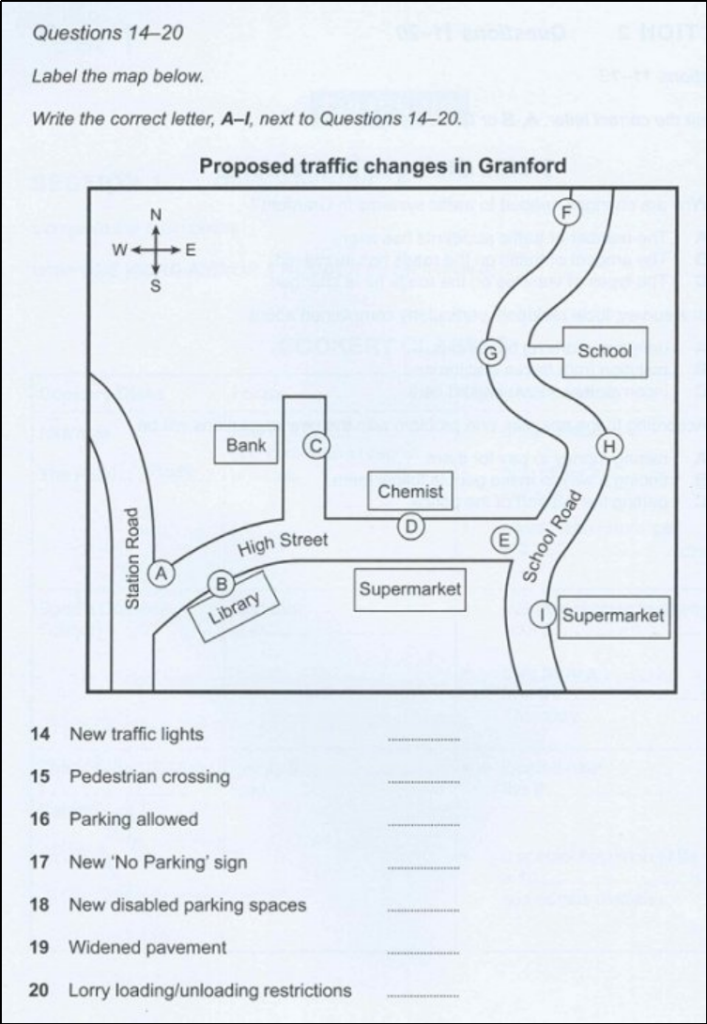
In the recording for this sample question, the chairman of the Highways Committee is explaining the new traffic regulations and parking arrangements proposed for Granford at a public meeting.

IELTS Listening Sample Test 2

For this question, the speaker is the librarian of a new town library. They are talking to a group of people who are visiting the library.
We’ll be using this second example to practice the strategy and tips I’m about to show you.

Strategy & Tips
You will have a short time to prepare before the speakers begin talking. Use this time to familiarise yourself with the question and focus your mind on what you need to listen out for.
1) Read the instructions
Read the instructions very carefully as the wording, and what you have to do, vary in this type of question. For example, the instructions for the first sample question state:
Write the correct letter, A–I, next to Questions 14–20
So, you must write a letter next to each word in the answer list.
In the second example they state:
Choose FIVE answers from the box and write the correct letters next to questions 11–15.
In this case, you will write your answer on the plan itself.
Very important: Write only the letter (A–I) on the plan. Do not write the word. If you do, your answer will be marked wrong.
So, if answer 11 was ’computers’, your answer would be 11 C, not 11 computers.
2) Read the labels & title
Learn as much as you can about the map or plan from the existing labels, and the words in the answer list if there is one. Some maps and plans will also have a title which is another big clue as to the context of the question and what the recording will be about.
For example, the question in IELTS Listening Sample Test 1 above, has the title ‘Proposed traffic changes in Granford’. Knowing this should bring a few ideas to mind as to the sort of information that will be included in the audio text.
The more familiar you are with the vocabulary and the layout of the graphic, the easier it will be to understand and follow what the speaker says.
If there is no words list, try and predict what type of word the answers will be from the context of the plan or map, for example, is it a room, a building, a street, a feature such as a pond or a facility such as a public toilet.
Generally, the speaker will begin their talk by introducing themselves and the subject or purpose of the talk so this will also help you to understand the context.
3) Visualisation
One of the skills needed to answer map and plan questions successfully is to be able to visualise what the place being described looks like.
We use maps and plans in everyday life so your brain will already be used to doing this, although you normally do it subconsciously without even thinking about it.
In the precious seconds you have for preparation, imagine that you are standing in the location represented on the graphic. What can you see around you?
For our sample question, imagine that you are at the entrance to the library and then picture yourself walking inside. Note the different rooms you see as identified by the labels on the plan. Try this now.
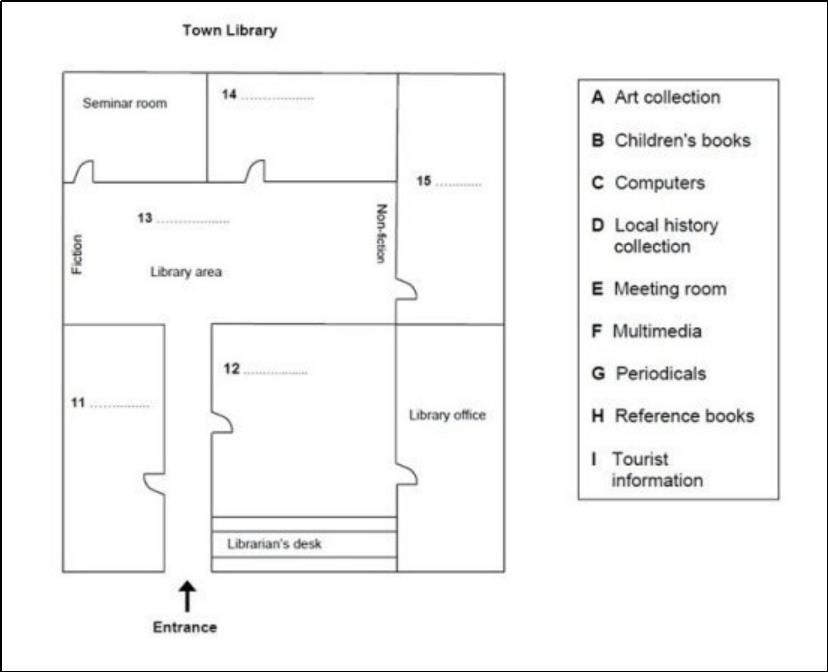
Even a few seconds spent doing this will help you to follow the information or directions given by the speaker and to identify the correct answers.
You can do a similar visualisation with a map question. Imagine yourself standing at a particular point and picture what you can see around you, noting the different buildings and other features. Try this with the sample question.
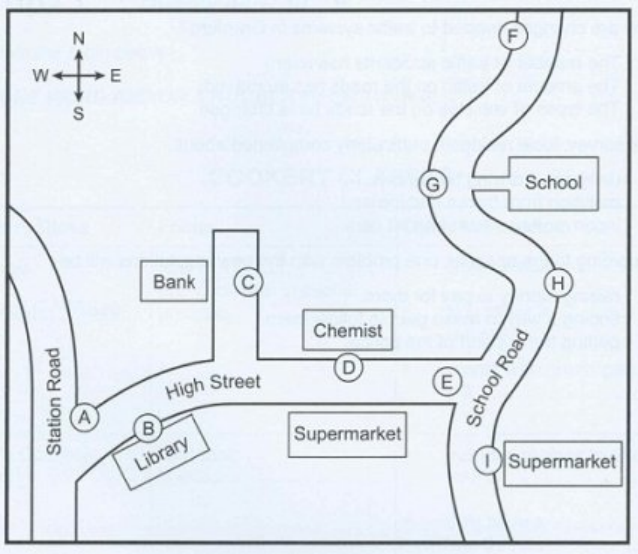
4) Answer order
The answers will come in the same order in the recording as they are listed in the question so, for our sample question, you’ll hear answer 11 first, then answer 12 and so on. This makes it easier to pick out the answers than if they were in a random order.
5) Vocabulary
To do well in map and plan questions, you need to understand the language of location and direction.
- Location – where something is in relation to another object or place.
- Direction – the position towards which someone moves or faces
Common vocabulary of location:
- near
- next to
- in front of
- beside
- between
- across from
Common vocabulary of direction:
- turn right
- turn left
- go straight on
- go past
- head south
- northwest
Knowing this vocabulary is so important to your success check out the Map Vocabulary PDF below
Click the link to learn some key vocabulary you need for your test. The lesson includes 5 maps and plans with sample sentences containing common vocabulary.

DOWNLOAD THE PDF FOR FREE
IELTS Listening Practice: Map Vocabulary

6) Synonyms and paraphrasing
In all types of Listening questions, you need to listen out for synonyms and paraphrasing. As you’re listening to the recording, remind yourself that you are not looking for the exact words as in the question but the same meaning.
So, for example, if an answer is ‘reference books’ the speaker might say,
In the corner, next to the history section, you’ll find ten shelves of encyclopedias, dictionaries and directories.
We’ll look at the synonyms and paraphrasing that have been used in our practice question when we review the answers.
7) Watch out for distractors
The examiners may try and catch you out with distractors. A distractor is a word or a phrase that changes or corrects the original piece of information given. So, you may be given an answer and then have it taken away again.
Here are some sample sentences containing distractors. I’ve highlighted the relevant words.
- The shop next to the bakery was a newsagent but it’s now been replaced by a charity shop.
- In the original design, the café and bookshop were next to each other. However, the plans were changed to locate the bookshop by the exit.
- When the alterations are carried out, the storeroom will become an office. No, sorry. That’s been altered. It will be the new staffroom.
The use of ‘but’ and ‘however’ are particularly common distractors but there are many different words and phrases that can be used to change or correct a piece of information so be alert for them.
8) Guess if necessary
My final tip is to never leave a blank space on the answer sheet. If you miss an answer, take an educated guess. This gives you at least some chance of getting it right. Don’t stress about a missed answer or it will affect your ability to answer the next set of questions. Just make your choice and move on.

IELTS Listening Practice: Answer Sheet

Also check out these resources to successfully prepare for IELTS



